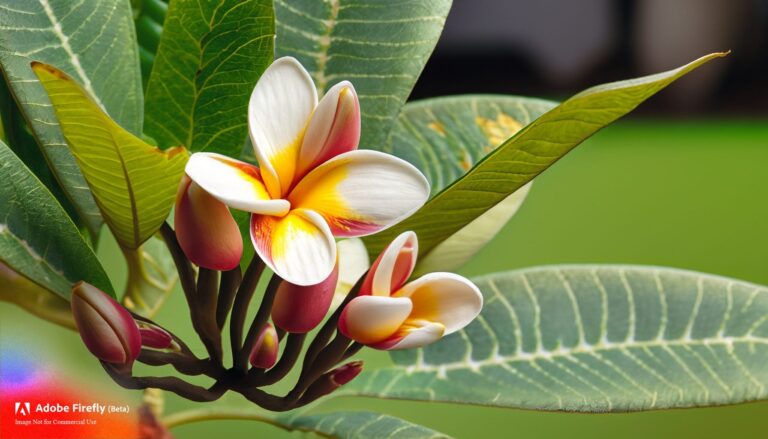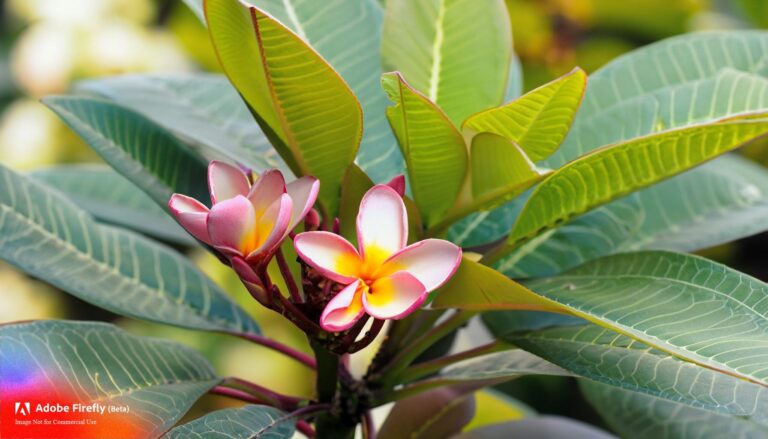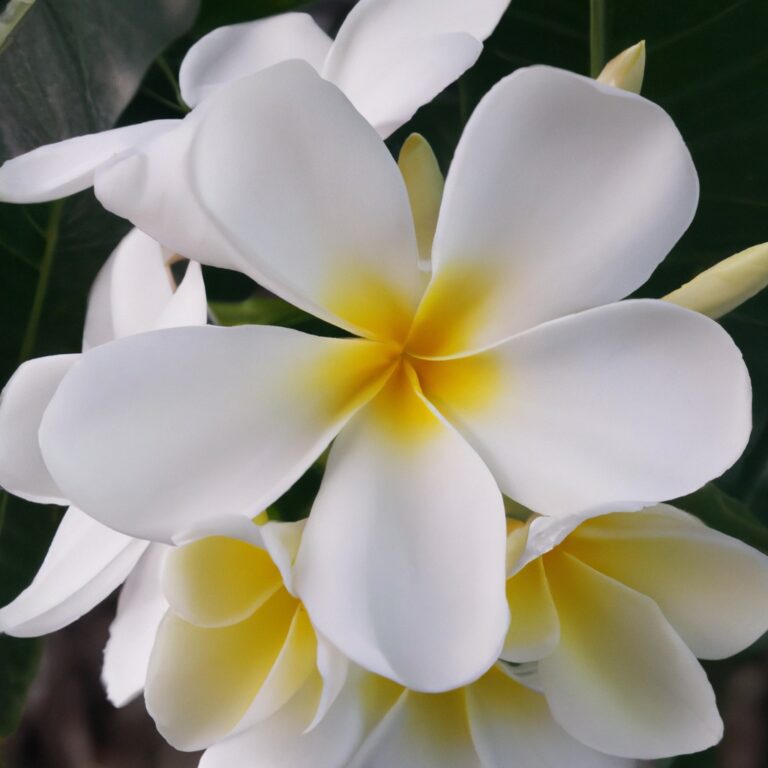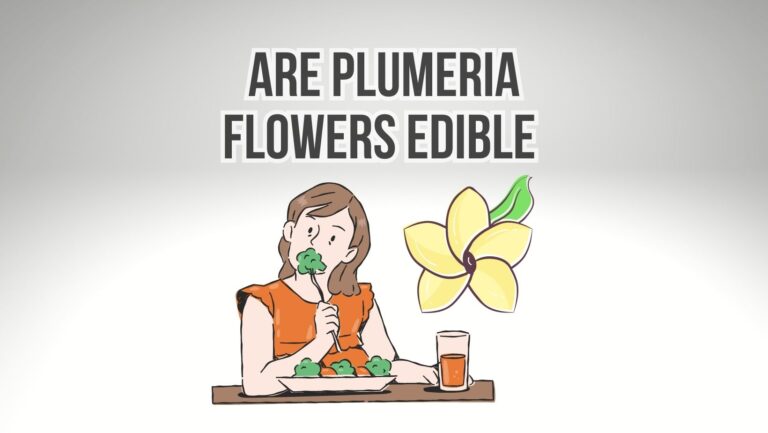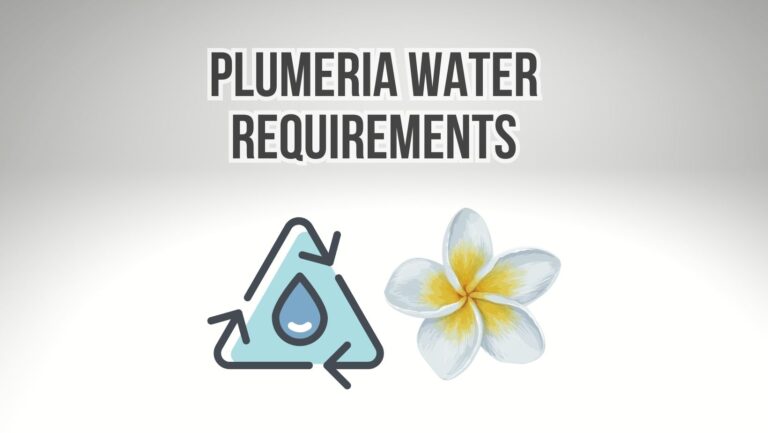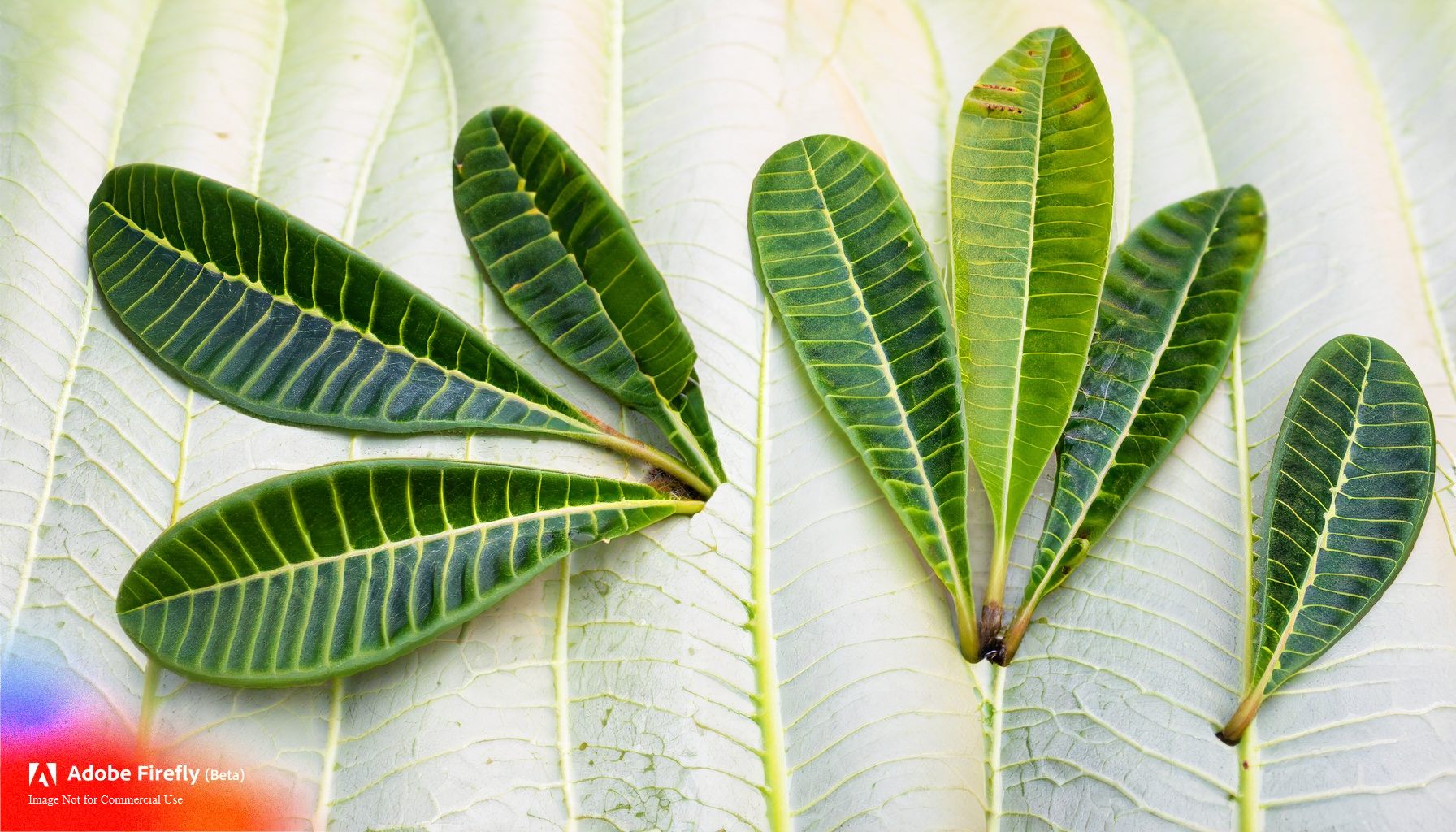
Plumerias, renowned for their striking blooms and alluring fragrance, can occasionally face leaf deformities that affect their overall health and aesthetics. These deformities can stem from various factors, including pests, diseases, environmental stressors, and genetic traits. Understanding the causes behind leaf deformities and implementing appropriate solutions is essential for maintaining the vitality and beauty of your plumerias. In this article, we’ll explore common leaf deformities in plumerias and provide actionable solutions to address and prevent them.
Common Plumeria Leaf Deformities:
**1. Leaf Curling:
- Causes: Leaf curling is often triggered by environmental stressors such as insufficient water, excessive sunlight, or extreme temperature fluctuations.
- Solution: Ensure proper watering practices, provide shade during the hottest parts of the day, and create a stable microclimate to prevent extreme temperature changes.
**2. Leaf Spots and Discoloration:
- Causes: Leaf spots and discoloration can result from fungal or bacterial infections, as well as environmental stressors.
- Solution: Improve air circulation, avoid overhead watering, and apply fungicides or antibacterial treatments if necessary.
**3. Leaf Distortion and Wilt:
- Causes: Aphid infestations, which extract sap from leaves, can lead to leaf distortion and wilting.
- Solution: Control aphid populations through regular monitoring, introducing natural predators, and using insecticidal soaps or neem oil if needed.
**4. Leaf Edges Browning:
- Causes: Browning of leaf edges, also known as leaf burn, can result from sunburn due to excessive sunlight exposure.
- Solution: Gradually acclimate plumerias to direct sunlight, provide shade during the hottest part of the day, and ensure proper irrigation to prevent leaf burn.
**5. Abnormal Growth or Twisting:
- Causes: Abnormal growth and twisting of leaves can be attributed to viral infections or genetic mutations.
- Solution: If caused by viral infections, it’s essential to remove and destroy infected plants to prevent further spread. Genetic mutations are inherent and cannot be reversed.
**6. Yellowing Leaves:
- Causes: Yellowing leaves, known as chlorosis, can result from nutrient deficiencies, poor soil drainage, or root issues.
- Solution: Address nutrient imbalances through proper fertilization, improve soil drainage, and ensure adequate watering practices.
Solutions for Addressing Leaf Deformities:
**1. Preventive Measures:
- Maintain a healthy growing environment by providing appropriate sunlight, water, and nutrients.
- Avoid overwatering, which can lead to root rot and fungal issues.
- Ensure proper soil drainage to prevent waterlogged roots.
**2. Proper Watering:
- Water plumerias deeply but infrequently to encourage deep root growth.
- Water in the morning to allow excess moisture to evaporate during the day.
**3. Fertilization:
- Provide plumerias with a balanced, slow-release fertilizer during the growing season.
- Avoid over-fertilization, as excessive nitrogen can lead to leaf burn.
**4. Pest Management:
- Regularly inspect plumerias for signs of pests such as aphids, spider mites, and mealybugs.
- Implement integrated pest management (IPM) strategies to control pest populations.
**5. Disease Control:
- Maintain good air circulation around plumerias to prevent fungal and bacterial infections.
- Apply fungicides or antibacterial treatments as a preventive measure or in response to outbreaks.
**6. Sun Protection:
- Gradually expose plumerias to direct sunlight to prevent leaf burn.
- Provide shade during the hottest parts of the day, especially for newly planted or recently pruned plumerias.
**7. Regular Pruning:
- Prune to remove affected leaves and promote better air circulation.
- Regularly remove dead or damaged plant material to prevent the spread of diseases.
**8. Cultural Practices:
- Avoid overhead watering to prevent fungal infections.
- Mulch around plumerias to conserve soil moisture and maintain a consistent soil temperature.
Conclusion:
Plumeria leaf deformities can be caused by a range of factors, from environmental stressors to pests and diseases. By understanding the causes behind these deformities and implementing effective solutions, you can ensure the health, vigor, and aesthetic appeal of your plumerias. Regular monitoring, proper care, and proactive measures are key to preventing and addressing leaf deformities, allowing these tropical beauties to flourish in your garden.

